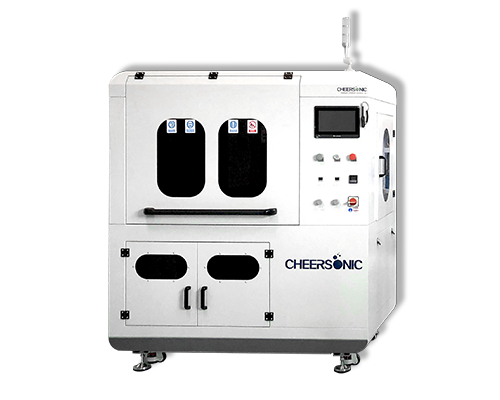Wafer Etching
Wafer Etching – Polyimide Coatings – Photoresist Coating – Cheersonic
After the photolithography of the circuit pattern on the wafer is completed, an etching process is used to remove any excess oxide film and leave only the semiconductor circuit pattern. To do this requires the use of liquid, gas or plasma to remove selected excess. There are two main methods of etching, depending on the substance used: wet etching, which uses a specific chemical solution to perform chemical reactions to remove oxide films, and dry etching, which uses gas or plasma.
①Wet etching
Wet etching using chemical solutions to remove oxide films has the advantages of low cost, fast etching speed and high productivity. However, wet etching is isotropic in that its speed is the same in any direction. This results in the mask (or sensitive film) not being perfectly aligned with the etched oxide film, making it difficult to handle very fine circuit patterns.
②Dry etching
Dry etching can be divided into three different types. The first is chemical etching, which uses an etching gas (mainly hydrogen fluoride). Like wet etching, this method is isotropic, which means it is also not suitable for fine etching.
The second method is physical sputtering, which uses ions in the plasma to strike and remove excess oxide layers. As an anisotropic etching method, sputtering etching has different etching speeds in the horizontal and vertical directions, so its fineness is also higher than that of chemical etching. But the disadvantage of this method is that the etching speed is slower, because it completely relies on the physical reaction caused by ion collision.
The final third method is reactive ion etching (RIE). RIE combines the first two methods, that is, chemical etching with the help of free radicals generated after plasma activation while using plasma for ionization physical etching. In addition to the etching speed exceeding the previous two methods, RIE can utilize the characteristics of ion anisotropy to realize the etching of high-definition patterns.
Dry etching has been widely used today to improve the yield of fine semiconductor circuits. Maintaining full-wafer etch uniformity and increasing etch speed is critical, and today’s state-of-the-art dry etch equipment is supporting the production of state-of-the-art logic and memory chips with higher performance.
Ultrasonic spraying technology is used for semiconductor photoresist coating. Compared with traditional coating processes such as spin coating and dip coating, it has the advantages of high uniformity, good encapsulation of microstructures, and controllable coating area. In the past 10 years, it has been fully demonstrated that the 3D microstructure surface photoresist coating using ultrasonic spraying technology, the prepared photoresist coating is significantly higher than the traditional spin coating in terms of microstructure wrapping and uniformity Craft.

The ultrasonic spraying system can precisely control the flow rate, coating speed and deposition volume. Low-speed spray shaping defines atomized spray as a precise and controllable pattern to avoid excessive spray when producing a very thin and uniform layer. The ultrasonic spray system can control the thickness from sub-micron to more than 100 microns, and can coat any shape or size.
